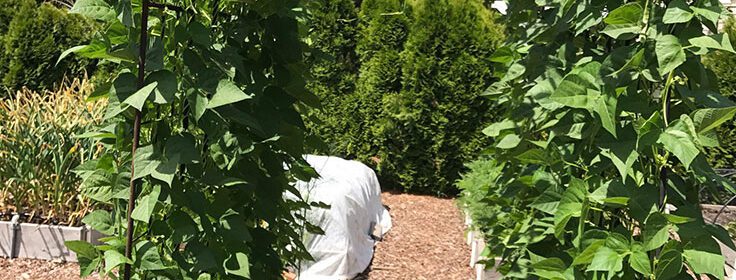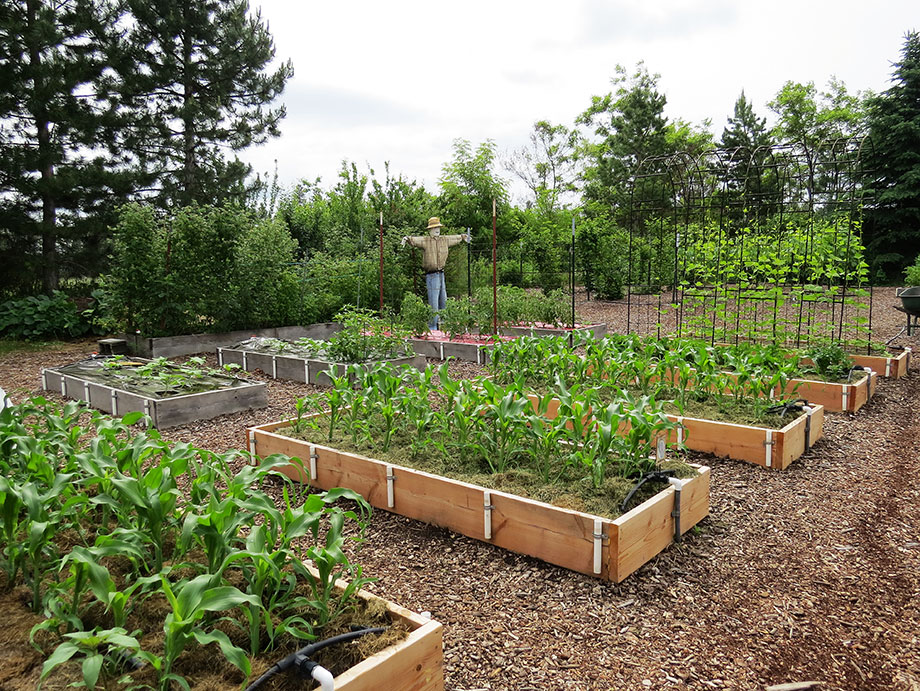Feb. 28 Column: Choosing your Vegetable Garden site

It’s time for my second garden column of the 2021 growing season. Since I want you to have the best success possible, the topic is choosing your vegetable garden site. Here’s a link to it in today’s edition of The Spokesman-Review: Follow the sun to find the right place to plant your garden. (you can also read the text of my column at the bottom of this post)
You might think choosing a spot for growing veggies is pretty straightforward, but I know not everyone is blessed with a nice, open, and sunny spot. In order for vegetable crops to grow well and be productive, they require a minimum of 6 to 8 hours of sunlight daily. But don’t despair: the great news is that there are ways to get around this requirement. You just have to be creative!
Fortunately, I have some suggestions for you in both my column and in this week’s video. And even if you’re beyond choosing your vegetable garden site, there are still some ideas that you might want to employ. One is growing vining types of veggies on vertical structures. You’ll see what I mean in the video below. We use an arbor system for growing pole beans over a garden pathway. We also made an arbor from 2 livestock panels (a.k.a. cattle panels) to grow our smaller types of winter squash on (‘Autumn Frost’ and ‘Potimarron’). Boy did that work great!
I really do hope my column and video will give you some good ideas. Enjoy!
Garden column on choosing your vegetable garden site
As an avid vegetable gardener and a writer, my goal is to encourage everyone to grow a garden. Being able to grow at least some of your food is an important skill and it’s really not all that hard. I’m excited that so many people began their gardening journey last year. If you weren’t one of them, this year’s growing season is the perfect opportunity to join in the fun.
Choosing your vegetable garden site is the most important step. Vegetables require at least 6 to 8 hours of direct sun daily to grow and be productive. Whether you’ve already picked out a spot for your garden or are mulling over your options, you’ll want to read on for some tips on meeting, or possibly getting around, that requirement.
Tips for choosing your vegetable garden site
Start by walking through your yard at different times of day to get a feel for how the sunlight moves across it. Pick a spot away from tall trees or structures that cast shade during the day. If there’s a structure on the north side of your garden area, and it has been painted a light color, you might be able to use that to your advantage since it will reflect additional light and perhaps some warmth.
You can still grow vegetables if your garden spot gets a bit of shade during the day. Just choose crops that tolerate some shade such as beets, bok choi, broccoli, cabbage, carrots, celery, chard, green onions, kohlrabi, leeks, lettuce, mustard, spinach and turnips.
Another way to compensate for a partly shady garden is by growing vining forms of vegetables on a trellis so they can grow up into the sunlight. Ideal choices include pole beans, peas, cucumbers, melons and small winter squash.
Consider gardening in raised beds if you live in an area that has very rocky soil or the soil doesn’t drain well. Raised beds are an ideal solution and vegetables thrive in them.
Alternatives to a traditional garden
What if there’s no room for a traditional vegetable garden? Many crops do well in pots or cloth grow bags, which you can find at garden centers and online. Containers look cool on patios, decks and balconies and it’s an easy way to take advantage of a sunny spot. Some gardeners place casters under their pots so they can move them around to follow the sun. Potting soil dries out quickly in containers so be sure to monitor them regularly. Self-watering containers, which have a large water reservoir in the bottom, are a great option for keeping the soil evenly moist.
Consider adding a “wow” factor to your landscape by planting edible crops right alongside your ornamental plants. I do this with our artichoke plants. No matter which of the above options you consider, remember that you don’t need a lot of room to grow some tasty produce.
While you’re planning where and how you’ll grow this year’s garden, I would encourage you to buy your seeds as soon as possible. I naively thought they wouldn’t be as hard to come by this year but the higher demand for seeds and slower shipping times is once again creating challenges. Be sure to check out your local garden centers first. I’ve seen some great selections and you won’t have to pay for shipping.
I’ve got a fun project for you. Plant about a dozen lettuce seeds – or other types of salad greens – indoors right now. I’ll explain why next week.
Susan Mulvihill is author of “The Vegetable Garden Pest Handbook.” She can be reached at Susan@susansinthegarden.com. Watch this week’s “Everyone Can Grow a Garden” video at youtube.com/susansinthegarden.

